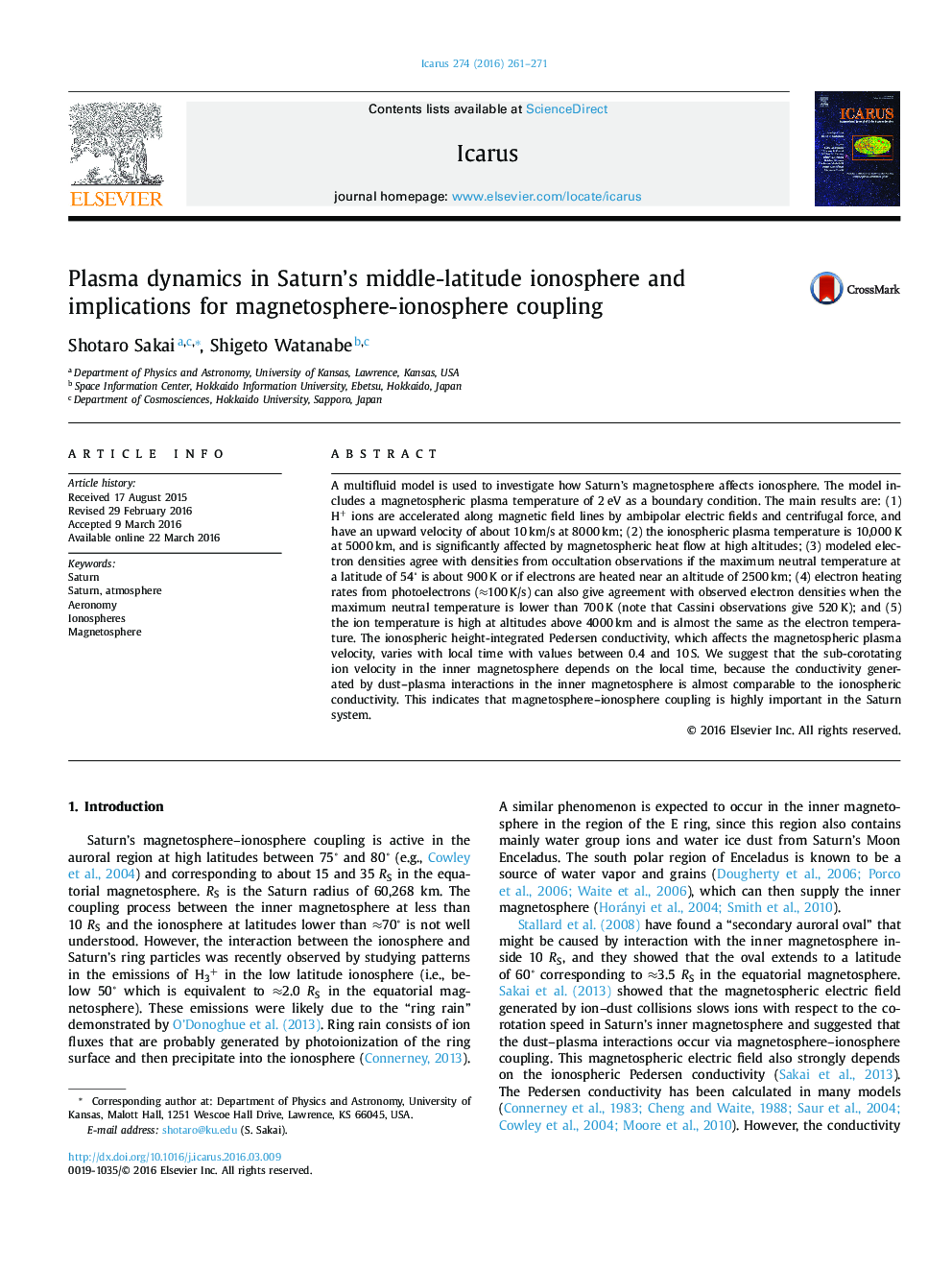| Article ID | Journal | Published Year | Pages | File Type |
|---|---|---|---|---|
| 8134994 | Icarus | 2016 | 11 Pages |
Abstract
A multifluid model is used to investigate how Saturn's magnetosphere affects ionosphere. The model includes a magnetospheric plasma temperature of 2Â eV as a boundary condition. The main results are: (1) H+ ions are accelerated along magnetic field lines by ambipolar electric fields and centrifugal force, and have an upward velocity of about 10Â km/s at 8000Â km; (2) the ionospheric plasma temperature is 10,000Â K at 5000Â km, and is significantly affected by magnetospheric heat flow at high altitudes; (3) modeled electron densities agree with densities from occultation observations if the maximum neutral temperature at a latitude of 54Ë is about 900Â K or if electrons are heated near an altitude of 2500Â km; (4) electron heating rates from photoelectrons (â100Â K/s) can also give agreement with observed electron densities when the maximum neutral temperature is lower than 700Â K (note that Cassini observations give 520Â K); and (5) the ion temperature is high at altitudes above 4000Â km and is almost the same as the electron temperature. The ionospheric height-integrated Pedersen conductivity, which affects the magnetospheric plasma velocity, varies with local time with values between 0.4 and 10Â S. We suggest that the sub-corotating ion velocity in the inner magnetosphere depends on the local time, because the conductivity generated by dust-plasma interactions in the inner magnetosphere is almost comparable to the ionospheric conductivity. This indicates that magnetosphere-ionosphere coupling is highly important in the Saturn system.
Related Topics
Physical Sciences and Engineering
Earth and Planetary Sciences
Space and Planetary Science
Authors
Shotaro Sakai, Shigeto Watanabe,
